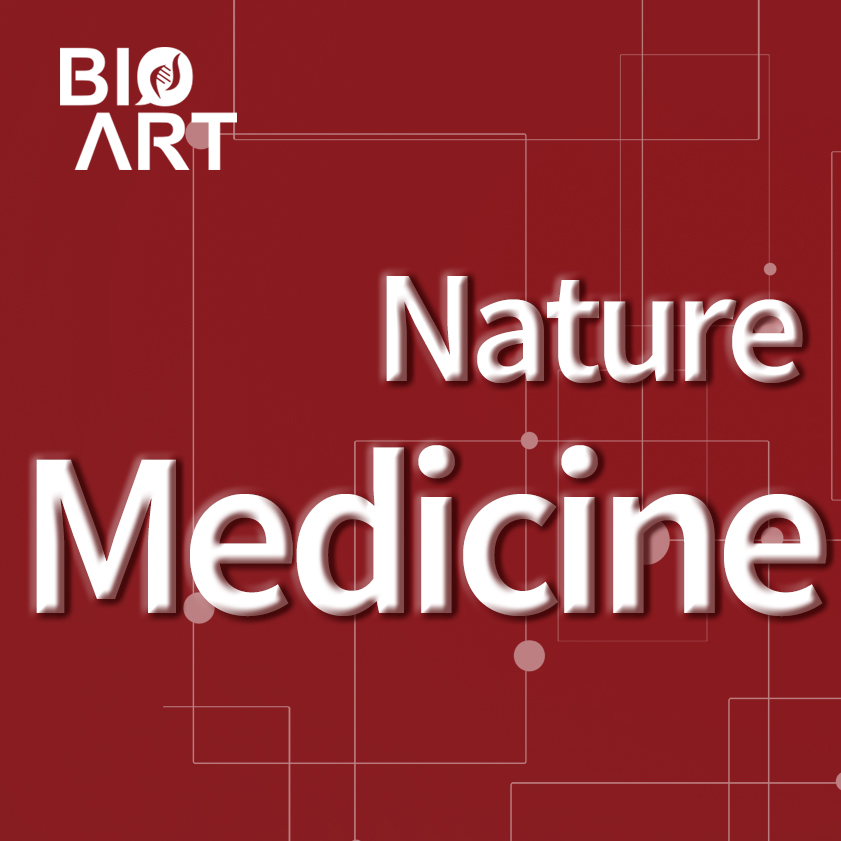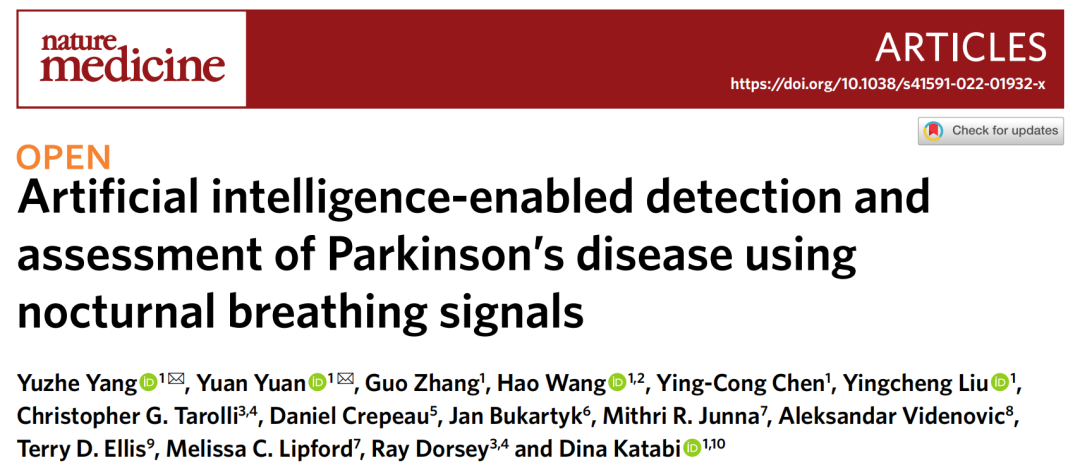Develop the AI model using the breathing signal of night sleep to diagnose Parkinson's disease
Author:Bioart biological art Time:2022.09.27

##Is a complex neurodegenerative disease, and it is also the second common neurodegeneration disease in the world, affecting about 1%-2%of elderly people. As the global population aging, the incidence of Parkinson's disease will increase significantly. At present, more than 6 million people in the world have Parkinson's disease, and about 60,000 new patients are diagnosed each year. The loss of neurons in dopamine in the patient's brain affects exercise and cognition, leading to symptoms such as tremor, muscle stiffness, blurred consciousness, and dementia. However, Parkinson's disease is difficult to diagnose, because the diagnosis of Parkinson's disease mainly depends on the occurrence of motion symptoms such as tremor, muscle stiffness, and slow movement. However, these symptoms usually occur after a few years of illness. At this time Nerve injury.
Over the years, researchers have been studying the use of cerebrospinal fluid and neural imaging to detect Parkinson's potential, but these methods are invasive, expensive, and need to go to a professional medical center to test. This makes them unsuitable for frequent detection, and they cannot provide early diagnosis or continuous tracking of disease progress. The current clinical Parkinson disease diagnosis method mainly depends on the occurrence of clinical exercise symptoms, such as muscle tremor, stiffness and slow mobility. However, these symptoms usually occur after a few years or even decades of illness. At this time, patients often have irreversible nerve injury (such as 50%-80%dopamine energy neurons).
In fact, as early as 1817, Dr. James Parkinson (named after Parkinson's disease) discovered the relationship between Parkinson's disease and breathing. This suggests that we may diagnose Parkinson's disease by detecting breathing without observing the symptoms of exercise. In addition, studies have shown that Parkinson's patients have experienced respiratory symptoms several years before they have exercise symptoms, such as respiratory muscle weakness, sleep respiratory disorders, and degeneration of the brain region that controls the breathing.

近日,麻省理工学院杨宇喆博士以第一作者和共同通讯作者的身份在Nature Medicine上发表了文章Artificial intelligence-enabled detection and assessment of Parkinson's disease using nocturnal breathing signals,使用AI模型,利用夜间的呼吸信号来Try to diagnose PD, monitor severity, and continue to track the progress of the disease. The final result also proves for the first time that sleeping signal is a powerful digital biomarker (Digital Biomarker) of Parkinson's disease.

This study confirmed that there is a close connection between Parkinson's disease and night respiratory symptoms, indicating that the detection model based on artificial intelligence can detect Parkinson's disease, evaluate its severity and track the progress of the disease. Because the breathing signal can be obtained by installing wireless signal devices at home and the principle of detecting breathing through wireless signals, it can be realized in the patient's home deployment and no physical contact diagnosis, severity testing, and long -term condition tracking system. Feed these breathing signals to the neural network without the operation of the patient and the nursing staff, and can evaluate Parkinson's disease.
Secondly, Parkinson's disease is a neurodegenerative disease that has developed slowly. In addition, due to the lack of markers that are currently sensitive to the degree of changes in the disease, the duration and cost of clinical trials It is 1.3 billion US dollars and 13 years), which limits many pharmaceutical companies' interest in developing Parkinson's disease or therapy. Therefore, this artificial intelligence -based biomarker can provide early diagnosis and can provide long -term and sensitive degree of changes in conditional changes, which may help shorten the clinical trial time, reduce costs, and promote drug development.
Original link:
https://www.nature.com/articleS/S41591-022-01932-X


Want to know more exciting content, come and pay attention to BIOART biological art
- END -
Men love frozen drinks to drink "heat stroke" diabetes
Wuhan Evening News June 29 (Correspondent Ma Yaoyao) In the hot summer, many people like to drink frozen drinks to dispel heat and thirst. A man in Hankou loves frozen drinks, although he has diabetes
This place is more likely to infection!Guangzhou notice Yuexiu 2 positive case details →

On August 24, Guangzhou held a press conference on the prevention and control of t...